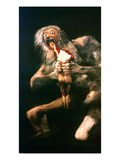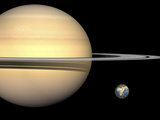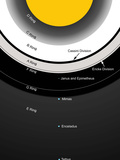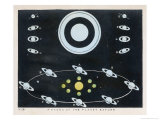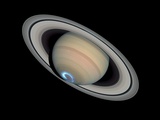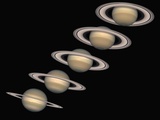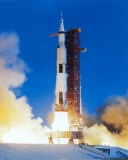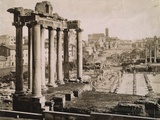|
|
Saturn Educational Astronomy Posters, Art Prints, and Charts
|
science posters > astronomy posters > SATURN < social studies
|
|

Saturn Educational Chart Poster
|
|
|
|
Saturn, [♄] the sixth planet from the Sun and Saturday were both named after the Roman god of agriculture.
|
|
Saturn is a gas giant (as opposed to a terrestrial such as Earth) and the second-largest planet in the solar system after Jupiter.
Saturn's most distinguishing feature are rings, consisting of mostly ice particles with a smaller amount of rocky debris, discovered by Galileo in 1610.
|
|
|
|
Facts about Saturn
• Distance from the sun: 1.8 billion miles
• Diameter: 75,000 miles (equatorial)
• Length of year: .5
• Rotation period/length of “day”: approximately 10-11 hours
• Temperature: Minus 270º F. or -168º C.
• Atmosphere: Hydrogen, helium
• Number of moons: observed 200
~~~~~~~~~~~~~~~~~~~~~~~~~~~~~
Saturn is named after the Roman god of agriculture Saturnus, (the Greek Kronos, father of Zeus) sharing the same root word with Saturday.
|
|
|
|
|
|
|
|
|
|
|
|
|
|
|
|
The name Saturn was given to a family of American rocket boosters that were adopted as the launch vehicles for the Apollo moon program.
They were first developed by a team of mostly German rocket scientists led by Wernher von Braun to launch heavy payloads to Earth orbit and beyond.
FYI - Apollo 11 was the spaceflight which landed the first humans, Neil Armstrong and Edwin “Buzz” Aldrin, Jr, on Earth's Moon on July 20, 1969.
|
|
|
|
In Roman mythology the god Saturnus presiding over agriculture and harvest time and was associated with wealth.
The Greek equivalent to Saturn was the god Cronos who ruled the outermost realms. Since the planet was the furtherest observable in ancient history, the body became associated with the god Saturnus.
The temple to Saturnus stood at the foot of Rome's Capitoline Hill in the western end of the Forum, housing the treasury where reserves of gold and silver were stored. The ruins of the pediment and eight surviving columns represent an iconic images of Rome's ancient architectural heritage.
|
|
|
previous page | top
|
|
I have searched the web for visual, text, and manipulative curriculum support materials - teaching posters, art prints, maps, charts, calendars, books and educational toys featuring famous people, places and events - to help teachers optimize their valuable time and budget.
Browsing the subject areas at NetPosterWorks.com is a learning experience where educators can plan context rich environments while comparing prices, special discounts, framing options and shipping from educational resources.
Thank you for starting your search for inspirational, motivational, and educational posters and learning materials at NetPosterWorks.com. If you need help please contact us.
|
|
|
|










